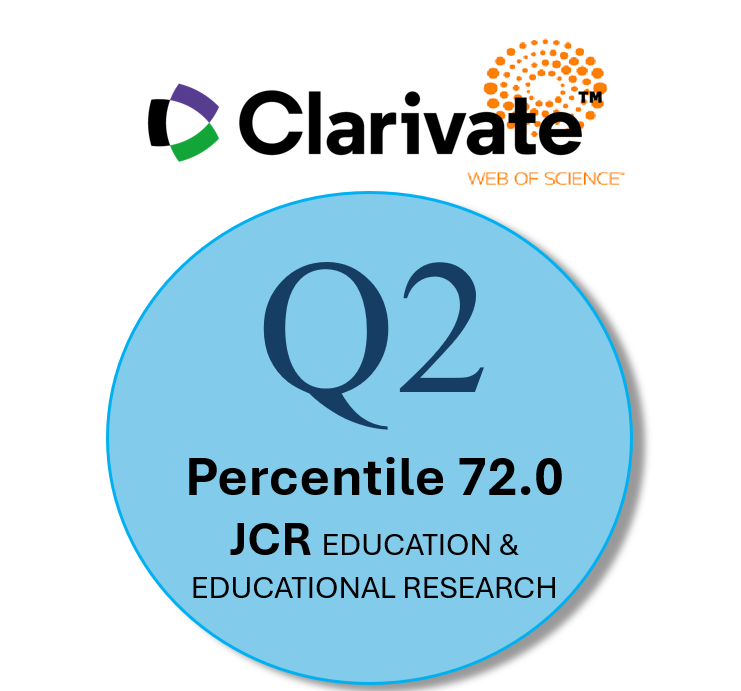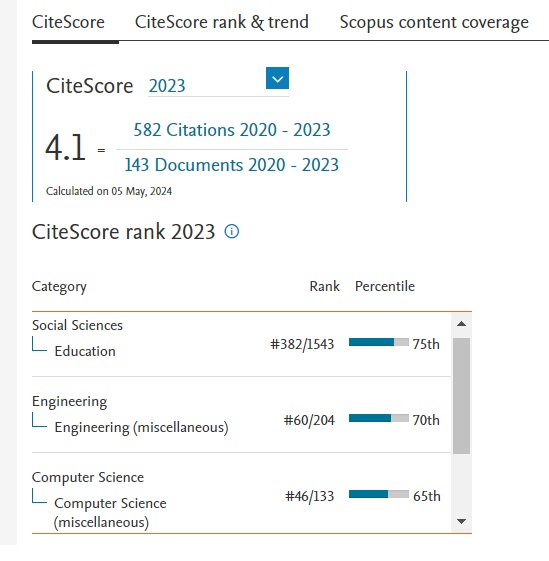Lentes convergentes: Diagramas PLE, flujos de trabajo PKM y ontologías académicas
Resumen
Este artículo revisa el surgimiento y desarrollo de tres perspectivas diferentes sobre el trabajo del conocimiento: PLE (Entornos personales de aprendizaje), PKM (Gestión personal del conocimiento) y Ontologías académicas. Cada uno se describe brevemente, seguido de una descripción general de cómo se alinean y podrían usarse de manera útil como enfoques para presentar a los estudiantes métodos formales de procesos de conocimiento en su aprendizaje.
En este artículo se revisa la aparición y el desarrollo de tres perspectivas distintas para aproximarse al trabajo con el conocimiento: los PLE (Entornos Personales de Aprendizaje), las PKM (Redes de gestión del conocimiento) y las ontologías académicas. Cada una de las perspectivas se describe brevemente, y a continuación se presenta una visión general de cómo se armonizan, complementan y pueden ser útiles como enfoques para la introducción de los estudiantes en los métodos formales para procesar el conocimiento en sus diversos ámbitos de aprendizaje.
Descargas
-
Resumen802
-
PDF 522
Citas
AHRC ICT Methods Network: Supporting the Digital Arts and Humanities: Home. (n.d.). Retrieved April 12, 2022, from http://www.methodsnetwork.ac.uk/index.html
Anderson, S., Blanke, T., & Dunn, S. (2010). Methodological commons: Arts and humanities e-Science fundamentals. Philosophical Transactions of the Royal Society A: Mathematical, Physical and Engineering Sciences, 368(1925), 3779–3796.
Anderson, T. (2006, January 9). » PLE’s versus LMS: Are PLEs ready for Prime time? Virtual Canuck. Virtual Canuck. http://terrya.edublogs.org/2006/01/09/ples-versus-lms-are-ples-ready-for-prime-time/
Attwell, G. (2007). Personal Learning Environments – the future of eLearning? ELearning Papers, 2(1). http://www.google.ie/url?url=http://scholar.google.com/scholar_url%3Fhl%3Den%26q%3Dhttp://senior.googlecode.com/files/media11561-1.pdf%26sa%3DX%26scisig%3DAAGBfm3SIPxaJqOfpejJGF3IGe-Fg3ImTw%26oi%3Dscholarr&rct=j&q=&esrc=s&sa=X&ei=zyrWU_auFeSN7Aa9ioD4Bw&sqi=2&ved=0CB0QgAMoADAA&usg=AFQjCNHrhlUs9G33CVxCOTs104Yxwtb8MQ&cad=rja
Avery, S., Brooks, R., Brown, J., Dorsey, P., & O’Conner, M. (2001). Personal knowledge management: Framework for integration and partnerships. Annual Conference of the Association of Small Computer Users in Education (ASCUE), Myrtle Beach, South Carolina, 10–14.
Blaschke, L. M. (2019). The pedagogy–andragogy–heutagogy continuum and technology-supported personal learning environments. In Open and distance education theory revisited (pp. 75–84). Springer.
Center for History and New Media. (n.d.). Zotero Quick Start Guide. http://zotero.org/support/quick_start_guide
Cigognini, M. E., Pettenati, M. C., & Edirisingha, P. (2011). Personal Knowledge Management Skills in Web 2.0-Based Learning [Chapter]. Web 2.0-Based E-Learning: Applying Social Informatics for Tertiary Teaching; IGI Global. https://doi.org/10.4018/978-1-60566-294-7.ch006
Cosgrave, M. (2009). Straw-structured reading, analysis and writing in humanities disciplines. INTED2009 Proceedings.
Cosgrave, M. (2014, March 5). Why I never set essays anymore. http://mikecosgrave.com/blog2006/random/why-i-never-set-essays-anymore/
Dabbagh, N., & Kitsantas, A. (2012). Personal Learning Environments, social media, and self-regulated learning: A natural formula for connecting formal and informal learning. The Internet and Higher Education, 15(1), 3–8.
DCU OnTo—NeDIMAH Ontology Navigation. (n.d.). Retrieved April 12, 2022, from http://nedimah.dcu.gr/
Hiebel, G., Doerr, M., & Eide, Ø. (2017). CRMgeo: A spatiotemporal extension of CIDOC-CRM. International Journal on Digital Libraries, 18(4), 271–279.
Home | CIDOC CRM. (n.d.). Retrieved April 12, 2022, from https://www.cidoc-crm.org/
Ismail, S., & Ahmad, M. S. (2011). Personal knowledge management among researchers: Knowing the knowledge expert. Proceeding of the 10th International Research Conference on Quality, Innovation and Knowledge Management (QIK2011): Bandar Sunway, Malaysia, 389–397.
Jarche, H. (2009, March 12). Sense-making with PKM. https://jarche.com/2009/03/sense-making-with-pkm/
Jarche, H. (2014). The Seek > Sense > Share Framework. https://jarche.com/2014/02/the-seek-sense-share-framework/
Johnson, M., & Liber, O. (2008). The Personal Learning Environment and the human condition: From theory to teaching practice. Interactive Learning Environments, 16(1), 3–15.
Martin, J. (2000). Personal Knowledge Management. Managing Knowledge: Case Studies in Innovation. Spotted Cow Press, Edmonton, Canada.
Martin, M. (2007, April 11). My Personal Learning Environment [Blog]. The Bamboo Project: http://michelemartin.typepad.com/thebambooprojectblog/2007/04/my_personal_lea.html
McLoughlin, C., & Lee, M. J. (2010). Personalised and self regulated learning in the Web 2.0 era: International exemplars of innovative pedagogy using social software. Australasian Journal of Educational Technology, 26(1).
NEMO Resources. (n.d.). Retrieved April 12, 2022, from http://nemo.dcu.gr/resources/
Niccolucci, F. (2017). Documenting archaeological science with CIDOC CRM. International Journal on Digital Libraries, 18(3), 223–231.
Oinn, T., Addis, M., Ferris, J., Marvin, D., Senger, M., Greenwood, M., Carver, T., Glover, K., Pocock, M. R., & Wipat, A. (2004). Taverna: A tool for the composition and enactment of bioinformatics workflows. Bioinformatics, 20(17), 3045–3054.
Okada, A., Shum, S. B., & Sherborne, T. (Eds.). (2008). Knowledge Cartography: Software Tools and Mapping Techniques. Springer London. https://doi.org/10.1007/978-1-84800-149-7
Pertsas, V., & Constantopoulos, P. (2017). Scholarly Ontology: Modelling scholarly practices. International Journal on Digital Libraries, 18(3), 173–190.
Theodoridou, M., Tzitzikas, Y., Doerr, M., Marketakis, Y., & Melessanakis, V. (2010). Modeling and querying provenance by extending CIDOC CRM. Distributed and Parallel Databases, 27(2), 169–210.
Tho, Q. T., Hui, S. C., Fong, A. C. M., & Cao, T. H. (2006). Automatic fuzzy ontology generation for semantic Web. IEEE Transactions on Knowledge and Data Engineering, 18(6), 842–856. https://doi.org/10.1109/TKDE.2006.87
Tur, G., Marín, V. I., Moreno, J., Gallardo, A., & Urbina, S. (2016). From diagrams to self-regulated learning: Student teachers’ reflections on the construction of their PLE. Educational Media International, 53(2), 139–152. https://doi.org/10.1080/09523987.2016.1211335
Unsworth, J. (2000). Scholarly primitives: What methods do humanities researchers have in common, and how might our tools reflect this. Symposium on Humanities Computing: Formal Methods, Experimental Practice. King’s College, London, 13, 5–00.
Uren, V., Buckingham Shum, S., Bachler, M., & Li, G. (2006). Sensemaking tools for understanding research literatures: Design, implementation and user evaluation. International Journal of Human-Computer Studies, 64(5), 420–445. https://doi.org/10.1016/j.ijhcs.2005.09.004
Van Harmelen, M. (2008). Design trajectories: Four experiments in PLE implementation. Interactive Learning Environments, 16(1), 35–46.
Weller, M. (2008, March 3). An audit on where stand with PLEs [Blog]. The Ed Techie. http://nogoodreason.typepad.co.uk/no_good_reason/2008/03/an-audit-on-whe.html
Derechos de autor 2023 Revista de Educación a Distancia (RED)

Esta obra está bajo una licencia internacional Creative Commons Atribución-NoComercial 4.0.
Las obras que se publican en esta revista están sujetas a los siguientes términos:
1. El Servicio de Publicaciones de la Universidad de Murcia (la editorial) conserva los derechos patrimoniales (copyright) de las obras publicadas, y favorece y permite la reutilización de las mismas bajo la licencia de uso indicada en el punto 2.
2. Las obras se publican en la edición electrónica de la revista bajo una licencia Creative Commons Reconocimiento-NoComercial-SinObraDerivada 3.0 España (texto legal). Se pueden copiar, usar, difundir, transmitir y exponer públicamente, siempre que: i) se cite la autoría y la fuente original de su publicación (revista, editorial y URL de la obra); ii) no se usen para fines comerciales; iii) se mencione la existencia y especificaciones de esta licencia de uso.
3. Condiciones de auto-archivo. Se permite y se anima a los autores a difundir electrónicamente las versiones pre-print (versión antes de ser evaluada) y/o post-print (versión evaluada y aceptada para su publicación) de sus obras antes de su publicación, ya que favorece su circulación y difusión más temprana y con ello un posible aumento en su citación y alcance entre la comunidad académica. Color RoMEO: verde.














